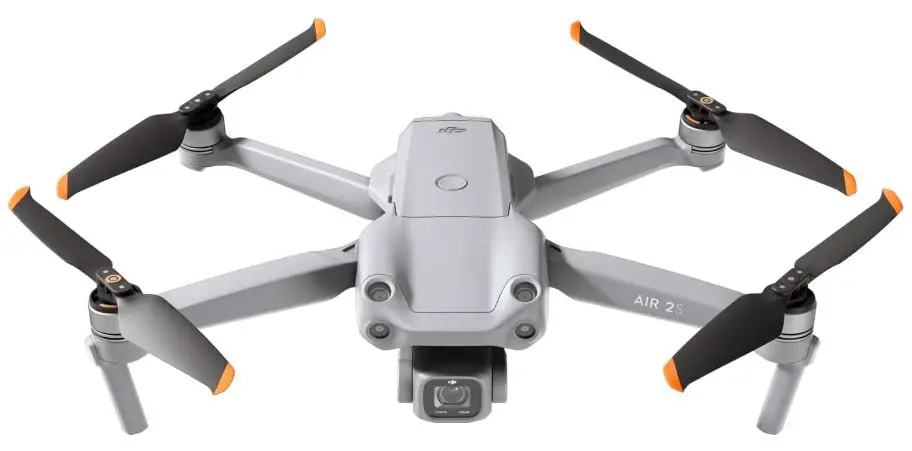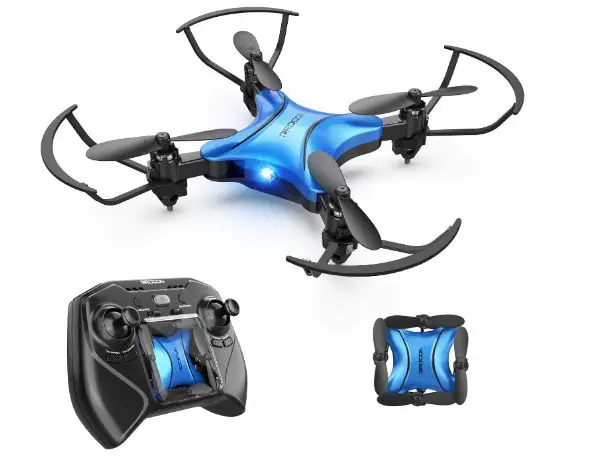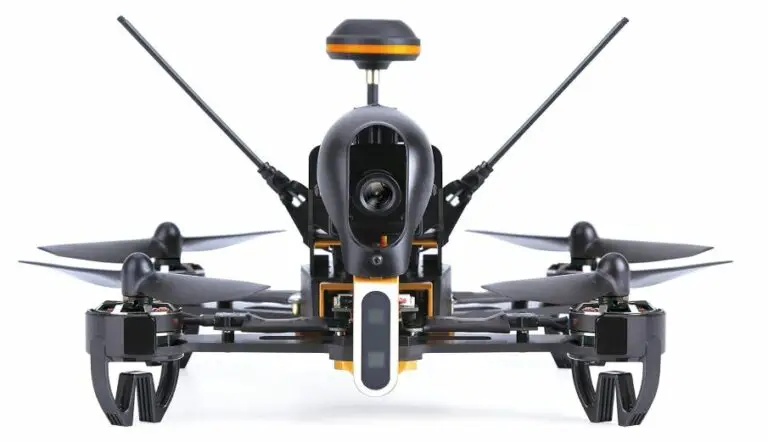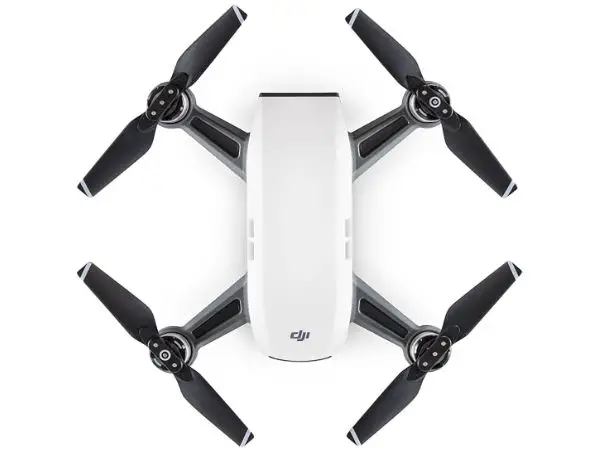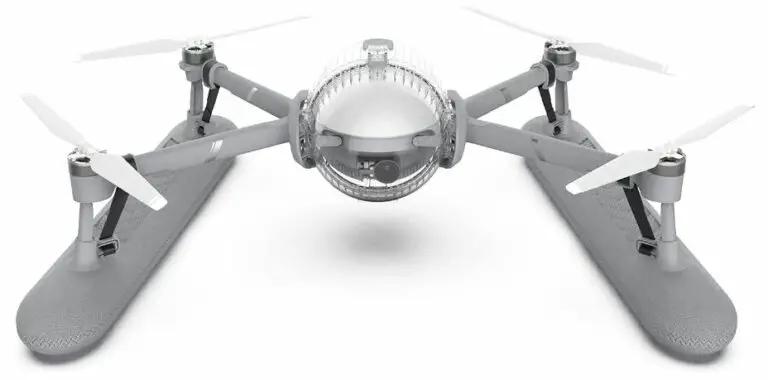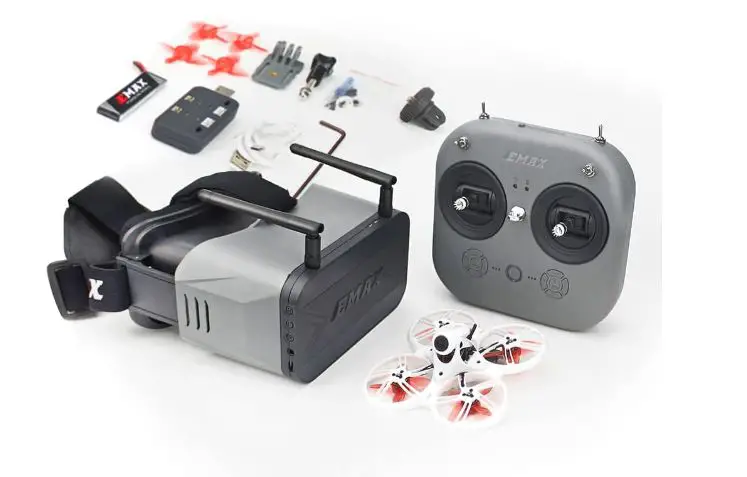How to Update your DGI Drone: Mavic, Mini, and Air
Introduction
Keeping your DJI drone up to date with the latest firmware is crucial for ensuring optimal performance, reliability, and safety during flights. DJI regularly releases firmware updates that include enhancements, bug fixes, and new features to improve the functionality of their drones. In this guide, we’ll explore the process of updating three popular DJI drone models: the Mavic series (including Mavic Pro and Mavic Air), the Mini series (including Mavic Mini), and the Air series (including Mavic Air). We’ll cover the steps you need to take to update your drone using either the DJI Assistant 2 software or the DJI Fly app, as well as provide tips for troubleshooting common update issues. By following this guide, you’ll be able to keep your DJI drone up to date and enjoy a seamless flying experience with the latest features and improvements.
Understanding the Importance of Updating Your Drone
Updating your DJI drone’s firmware is essential for several reasons:
- Enhanced Performance: Firmware updates often include optimizations and improvements that enhance the overall performance of your drone. These updates may address issues such as stability, flight control, and responsiveness, resulting in smoother and more reliable flights.
- Improved Safety: Firmware updates may also include important safety enhancements, such as updates to flight algorithms or battery management systems. These updates help ensure the safe operation of your drone and reduce the risk of accidents or malfunctions during flights.
- Compatibility with New Features: DJI frequently releases new features and capabilities for its drones through firmware updates. By keeping your drone’s firmware up to date, you’ll have access to these new features and functionalities, allowing you to take full advantage of your drone’s capabilities.
- Bug Fixes: Firmware updates often address known issues and bugs reported by users. By installing these updates, you can resolve any issues or problems you may have encountered with your drone, improving its overall reliability and performance.
- Regulatory Compliance: In some cases, firmware updates may include changes to comply with new regulations or requirements set by aviation authorities. Keeping your drone’s firmware up to date ensures that you remain compliant with relevant regulations and can continue flying legally and safely.
Overall, updating your DJI drone’s firmware is crucial for ensuring optimal performance, safety, and functionality. By staying up to date with the latest firmware releases, you can enjoy a better flying experience and maximize the capabilities of your drone.
Preparing for the Update Process
Before initiating the update process for your DJI drone, it’s essential to make sure you’re adequately prepared. Here are some steps to take to ensure a smooth update experience:
- Check Battery Level: Ensure that your drone’s battery is sufficiently charged before starting the update process. Updating the firmware can be a power-intensive task, and you don’t want your drone’s battery to run out of charge midway through the update, which could potentially cause issues or interruptions.
- Ensure Stable Internet Connection: Make sure you have access to a stable and reliable internet connection. The update process requires downloading firmware files from DJI’s servers, so a stable internet connection is essential to prevent interruptions or errors during the download and installation process.
- Backup Important Data: Although firmware updates generally don’t affect your drone’s data, it’s always a good idea to backup any important flight logs, photos, or videos stored on your drone or its memory card before proceeding with the update. This precaution ensures that you won’t lose any valuable data in the unlikely event of an update-related issue.
By taking these preparatory steps, you can minimize the risk of encountering issues or interruptions during the update process and ensure a smooth and successful firmware update for your DJI drone.
Updating Your DJI Mavic Drone
Updating the firmware of your DJI Mavic drone is essential to ensure optimal performance, stability, and safety during flights. Here’s how you can update the firmware of your DJI Mavic drone:
Using DJI Assistant 2 (for Mavic Pro, Mavic Air, etc.):
- Download and Install DJI Assistant 2:
- Visit the DJI website and download the DJI Assistant 2 software for your computer.
- Install the software on your computer and launch it.
- Connect Your Drone:
- Power on your DJI Mavic drone and connect it to your computer using a USB cable.
- Wait for DJI Assistant 2 to detect your drone.
- Check for Updates:
- Once your drone is detected, DJI Assistant 2 will automatically check for firmware updates.
- If a new firmware version is available, you will be prompted to download and install it.
- Download and Install Firmware:
- Follow the on-screen instructions to download the latest firmware version for your drone.
- Once the firmware download is complete, DJI Assistant 2 will guide you through the installation process.
- Complete the Update:
- During the update process, make sure not to disconnect your drone from the computer or turn off DJI Assistant 2.
- Once the update is complete, DJI Assistant 2 will notify you, and you can safely disconnect your drone from the computer.
Using DJI Fly App (for Mavic Mini):
- Open DJI Fly App:
- Power on your DJI Mavic Mini drone and launch the DJI Fly app on your mobile device.
- Connect Your Drone:
- Follow the on-screen instructions to connect your drone to the DJI Fly app via Wi-Fi.
- Check for Updates:
- Once connected, the DJI Fly app will automatically check for firmware updates.
- If a new firmware version is available, you will be prompted to download and install it.
- Download and Install Firmware:
- Follow the on-screen instructions to download the latest firmware version for your Mavic Mini drone.
- Once the firmware download is complete, the DJI Fly app will guide you through the installation process.
- Complete the Update:
- During the update process, ensure that your drone remains powered on and connected to the DJI Fly app.
- Once the update is complete, the DJI Fly app will notify you, and you can safely disconnect your drone.
By following these steps, you can easily update the firmware of your DJI Mavic drone using either DJI Assistant 2 or the DJI Fly app, depending on the model you own. Regular firmware updates ensure that your drone remains up to date with the latest features, improvements, and safety enhancements provided by DJI.
Updating Your DJI Mini Drone
Updating the firmware of your DJI Mini drone, such as the Mavic Mini, is essential to ensure optimal performance, stability, and safety during flights. Here’s how you can update the firmware of your DJI Mini drone using the DJI Fly app:
Using DJI Fly App:
- Open DJI Fly App:
- Power on your DJI Mini drone and launch the DJI Fly app on your mobile device.
- Connect Your Drone:
- Follow the on-screen instructions to connect your drone to the DJI Fly app via Wi-Fi.
- Check for Updates:
- Once connected, the DJI Fly app will automatically check for firmware updates for your DJI Mini drone.
- If a new firmware version is available, you will be prompted to download and install it.
- Download and Install Firmware:
- Follow the on-screen instructions to download the latest firmware version for your DJI Mini drone.
- Once the firmware download is complete, the DJI Fly app will guide you through the installation process.
- Complete the Update:
- During the update process, ensure that your drone remains powered on and connected to the DJI Fly app.
- Once the update is complete, the DJI Fly app will notify you, and you can safely disconnect your drone.
By following these steps, you can easily update the firmware of your DJI Mini drone using the DJI Fly app. Regular firmware updates ensure that your drone remains up to date with the latest features, improvements, and safety enhancements provided by DJI.
Updating Your DJI Air Drone
Updating the firmware of your DJI Air drone, such as the Mavic Air, is crucial to ensure optimal performance, stability, and safety during flights. Here’s how you can update the firmware of your DJI Air drone:
Using DJI Assistant 2:
- Download and Install DJI Assistant 2:
- Visit the DJI website and download the DJI Assistant 2 software for your computer.
- Install the software on your computer and launch it.
- Connect Your Drone:
- Power on your DJI Air drone and connect it to your computer using a USB cable.
- Wait for DJI Assistant 2 to detect your drone.
- Check for Updates:
- Once your drone is detected, DJI Assistant 2 will automatically check for firmware updates.
- If a new firmware version is available, you will be prompted to download and install it.
- Download and Install Firmware:
- Follow the on-screen instructions to download the latest firmware version for your drone.
- Once the firmware download is complete, DJI Assistant 2 will guide you through the installation process.
- Complete the Update:
- During the update process, make sure not to disconnect your drone from the computer or turn off DJI Assistant 2.
- Once the update is complete, DJI Assistant 2 will notify you, and you can safely disconnect your drone from the computer.
Using DJI Fly App:
- Open DJI Fly App:
- Power on your DJI Air drone and launch the DJI Fly app on your mobile device.
- Connect Your Drone:
- Follow the on-screen instructions to connect your drone to the DJI Fly app via Wi-Fi.
- Check for Updates:
- Once connected, the DJI Fly app will automatically check for firmware updates for your DJI Air drone.
- If a new firmware version is available, you will be prompted to download and install it.
- Download and Install Firmware:
- Follow the on-screen instructions to download the latest firmware version for your DJI Air drone.
- Once the firmware download is complete, the DJI Fly app will guide you through the installation process.
- Complete the Update:
- During the update process, ensure that your drone remains powered on and connected to the DJI Fly app.
- Once the update is complete, the DJI Fly app will notify you, and you can safely disconnect your drone.
By following these steps, you can easily update the firmware of your DJI Air drone using either DJI Assistant 2 or the DJI Fly app. Regular firmware updates ensure that your drone remains up to date with the latest features, improvements, and safety enhancements provided by DJI.
Troubleshooting Common Update Issues
Despite following the update process carefully, you may encounter some issues during the firmware update of your DJI drone. Here are some common issues and troubleshooting steps:
- Connectivity Problems:
- Solution: Ensure that your drone is properly connected to the computer or mobile device via USB cable or Wi-Fi. Check the USB connection, restart the drone and the computer/mobile device, and try reconnecting.
- Update Failures:
- Solution: If the update fails, restart the update process from the beginning. Make sure your drone has sufficient battery level and stable internet connection. If the issue persists, try using a different USB port or Wi-Fi network.
- Error Messages:
- Solution: Pay attention to any error messages displayed during the update process. Look up the error code or message in the DJI user manual or online forums to find specific troubleshooting steps. In some cases, you may need to contact DJI support for assistance.
- Interrupted Updates:
- Solution: If the update process is interrupted due to a power outage, disconnection, or other reasons, restart the update process from the beginning. Ensure that your drone’s battery is fully charged and that you have a stable internet connection.
- Compatibility Issues:
- Solution: Make sure you’re using the correct update method and software for your drone model. Some drones may require specific software or firmware versions for updates. Check the DJI website or user manual for compatibility information.
- Corrupted Firmware Files:
- Solution: If the firmware files become corrupted during download or transfer, delete the files and re-download them from the DJI website or app. Ensure that you have a stable internet connection and sufficient storage space on your device.
- Drone Not Recognized:
- Solution: If your drone is not recognized by the update software or app, try restarting both the drone and the computer/mobile device. Check the USB connection or Wi-Fi connection and ensure that the drone is powered on and in proper working condition.
If you encounter persistent issues or are unable to resolve them on your own, consider reaching out to DJI customer support for further assistance. They can provide additional troubleshooting steps or arrange for repair or replacement if necessary.
Tips for Successful Updates
- Ensure Stable Power Supply: Before initiating the update process, make sure your drone’s battery is fully charged. A stable power supply is crucial to prevent any interruptions during the update process.
- Use High-Quality USB Cables: If updating via DJI Assistant 2, ensure you’re using high-quality USB cables to connect your drone to the computer. Faulty or low-quality cables may result in connection issues during the update process.
- Use Reliable Internet Connection: If updating via the DJI Fly app, ensure you have a reliable and stable internet connection. A weak or intermittent connection may lead to incomplete downloads or failed updates.
- Follow Instructions Carefully: Pay close attention to the instructions provided by DJI Assistant 2 or the DJI Fly app during the update process. Follow each step carefully to ensure a successful update.
- Do Not Interrupt the Update: Once the update process has started, avoid interrupting it by disconnecting the drone, closing the update software or app, or turning off the drone or the device it’s connected to. Interruptions during the update process may result in firmware corruption or incomplete updates.
- Patience is Key: Firmware updates may take some time to download and install, depending on the size of the update and your internet connection speed. Be patient and allow the update process to complete without rushing or interrupting it.
- Check Compatibility: Ensure that the firmware version you’re updating to is compatible with your drone model. Using incompatible firmware versions may result in errors or issues with your drone’s performance.
- Keep Firmware Versions Consistent: If you have multiple DJI drones, ensure that all of them are running on the same firmware version to maintain consistency and compatibility within your fleet.
- Backup Important Data: As a precautionary measure, consider backing up any important data stored on your drone or its memory card before initiating the update process. While firmware updates generally do not affect user data, it’s better to be safe than sorry.
By following these tips, you can increase the likelihood of a successful firmware update for your DJI drone, ensuring optimal performance, stability, and safety during flights.
FAQs
Updating your DJI drone, whether it’s a Mavic, Mini, or Air, is essential to ensure it operates with the latest features, improvements, and security patches. Here are some frequently asked questions (FAQs) regarding updating your DJI drone:
Why should I update my DJI drone?
- Updates often include performance enhancements, bug fixes, and new features.
- Firmware updates can improve flight stability and safety.
- Updating may be required to unlock certain features or flight zones.
How do I check for updates?
- Open the DJI GO 4 or DJI Fly app on your mobile device.
- Connect your drone to the app and ensure a stable internet connection.
- Go to the “Aircraft” or “Device” settings section.
- Look for an option like “Firmware Update” or “Check for Updates.”
Can I update my drone without a smartphone or tablet?
Most of the time, using the official app, updating your DJI drone requires a mobile device.
Do I need to update the remote controller separately?
Sometimes, yes. The remote controller may have its own firmware that requires updating. Check the app for controller updates if available.
Can I skip firmware updates?
The duration of an update can vary, but it typically takes 15-30 minutes, depending on the size of the update and your internet connection speed.
What should I do if the update fails or gets stuck?
- Ensure you have a stable internet connection.
- Restart the app and your drone.
- Try updating from a different location.
- Contact DJI support for assistance if the problem persists.
Can I roll back to a previous firmware version if I don’t like the latest update?
DJI may not officially support downgrading firmware, and doing so can be risky. It’s generally recommended to stick with the latest firmware unless you encounter significant issues.
Are there any precautions to take before updating?
- Ensure your drone has sufficient battery life for the update.
- Fly in a safe location in case anything goes wrong during or after the update.
- Backup any important data from your drone or memory card before updating.
How often should I check for updates?
Check for updates periodically, especially before important flights or when DJI announces new features or improvements.
Are there any known issues with updates?
Occasionally, updates can introduce new issues. It’s a good idea to check online forums and DJI’s official website for information about any reported problems before updating.
Can I update multiple drones with one mobile device?
Yes, you can update multiple drones with one mobile device, but you’ll need to connect each drone one at a time to perform the update.
Conclusion
Keeping your DJI Mavic, Mini, or Air series drone updated with the latest firmware is crucial for safety and performance. By following these simple steps and regularly checking for updates, you can enjoy a smoother and more reliable flying experience while taking advantage of new features and improvements introduced by DJI. Always remember to fly your drone responsibly and in accordance with local regulations.

